LI-180
Spectrometer
Plant growth and reproduction are driven by photosynthetically active radiation (PAR), defined as wavelengths between 400 and 700 nanometers. This interval is often separated into three distinct “color” bands for plant research. Modifying the intensity of red, blue, green wavelengths, along with additional near-UV (380-400 nm) and far-red (700-780 nm) bands, can influence a variety of plant characteristics, such as growth rate, chemical composition, and more.
The precision linear image sensor of the LI-180 records intensity and composition of these five wavebands at the single-nanometer level with a single click. Optimize the composition of your supplemental lighting and track your spectrometer data over time for long-term validation of your lights and lighting strategy. Monitor degradation of your custom lighting system, plan for seasonal changes or upgrades, and design species-specific light recipes using the LI-180 Spectrometer.
Request a Quote Download Brochure
February 24—27, 2025
Tucson, Arizona, USA
February 24—27, 2025
Tucson, Arizona, USA
February 24—27, 2025
Tucson, Arizona, USA
Shorten Production Time
Modifying specific wavebands can accelerate growth, increase total fruit and vegetable yield, influence flowering, and increase maximum harvestable biomass of leafy greens and herbs.
Improve Yield Quality
Strategically modifying the spectral composition of your lights can improve the taste, nutrient content, and chemical composition of your fruits, vegetables, leafy greens, and herbs. Spectral changes can also affect stalk, leaf, and flower growth and distribution for ornamental plants.
Enhance Disease Resistance
Increasing specific wavelengths of light can inhibit the growth of, and minimize the damage from, mildew and other diseases common among greenhouse plants.
Why Choose the LI-180 Spectrometer?
The LI-180 combines precise, handheld spectral measurements with a polished and powerful interface ideal for the greenhouse grower on the move.

Instant Insights
Measure real-time changes from spectral manipulation, height adjustment, and plant positioning. In one click, the LI-180 records dozens of variables including PAR (as color-specific photosynthetic photon flux density (PPFD)), photon flux density (PFD), irradiance (W/m2), and more. Select a measurement to see details, such as ratios of red to blue or red to far-red intensity.
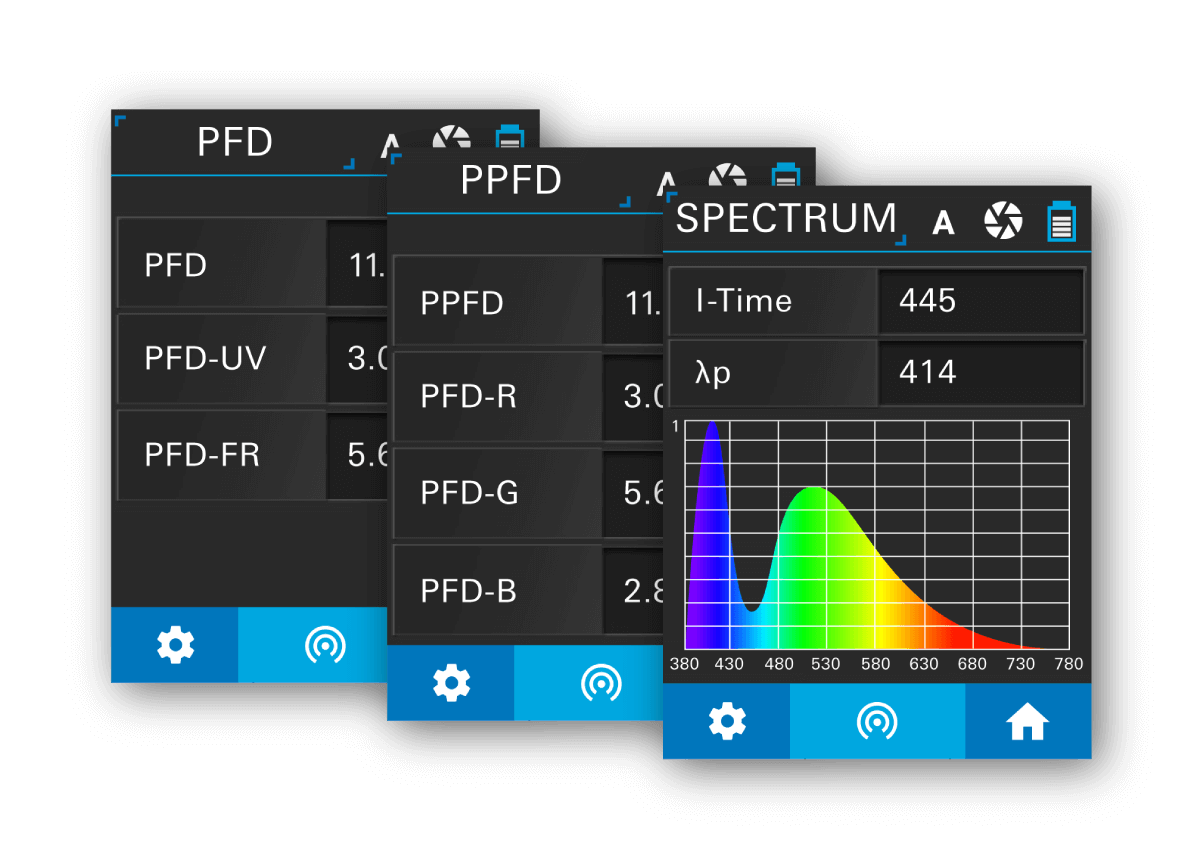
Actionable Results
Compare the spectra of your lighting to one of multiple reference spectra. Reference spectra are based on pigments important for photosynthesis and morphology, such as chlorophyll a or beta carotene. Then adjust your lighting strategy to better match the pigment peaks for species-specific responses throughout your greenhouse.
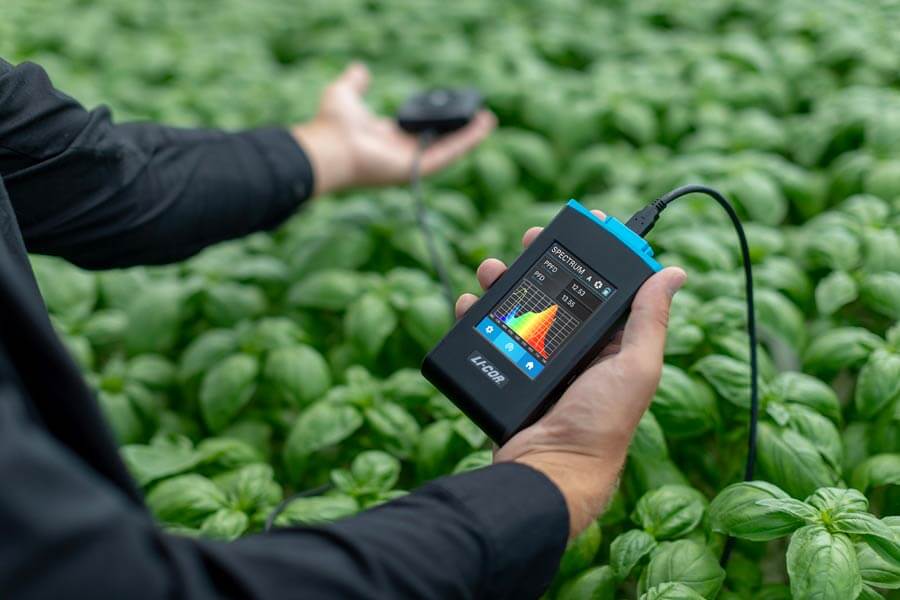
Superior Portability
Measure spectral output from any angle in and around your plants to find optimal spacing and height of supplemental lighting. The full capability of the LI-180 is within a compact, lightweight design that fits in the palm of your hand. Save your data to a high-capacity SD card or transfer data files via email from the mobile application.

Custom Experience
Measure specific wavebands of interest and view the results in tabular and graphical outputs immediately after capture. Create custom wavebands and ratios to focus on the light ranges you want. Determine which bands of light have the highest intensity from your lighting strategy.
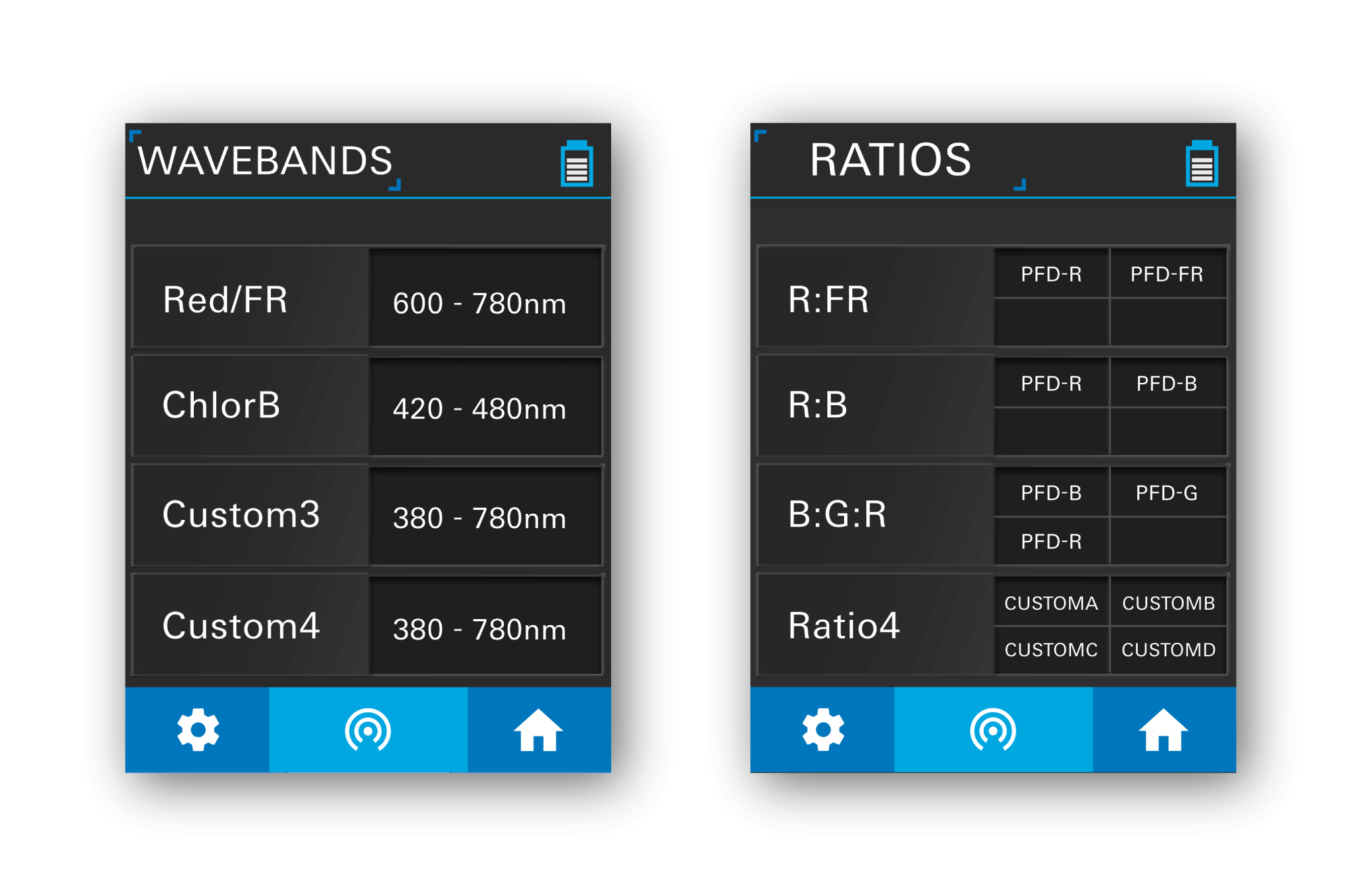
Reliable Support
LI-COR support team members are experienced and knowledgeable with diverse backgrounds in horticulture, plant physiology, botany, and other fields. Our team is readily available to support you in the use and care of LI-COR instruments.
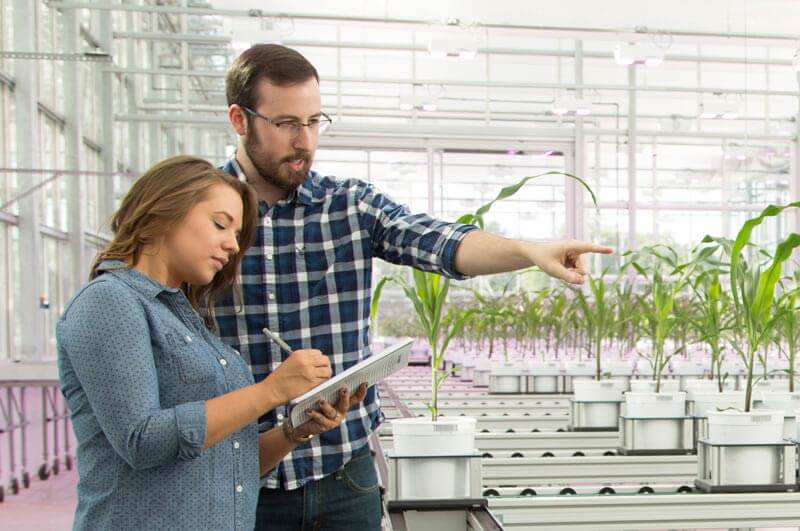
How Does It Work?
The LI-180 Spectrometer features a precise CMOS linear image sensor that measures photon flux density (PFD) over a 12 nm bandwidth. PFD measurements are reported in 1 nanometer increments between 380 and 780 nm. The LI-180 sensor measures with a precise cosine correction response for accuracy across the field of view.
Read more about cosine correction and other principles of light measurement
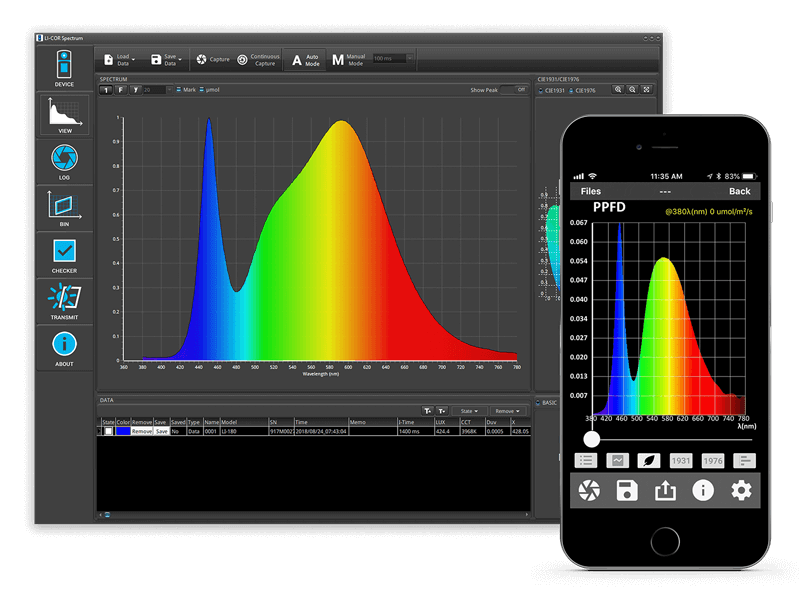
Software Options
The LI-180 features multiple software options for flexibility and performance.
Desktop Software
Perform detailed measurement analysis, including data visualization, manage files, and configure measurement parameters.
Mobile Applications
Available for iOS and Android mobile operating systems. Use your smart phone or tablet for instant measurements and transfer collected data from your mobile device via email.
Specifications
- Wavelength Range: 380 to 780 nm
- Wavelength Data Increment: 1 nm
- Spectral Bandwidth: Approximately 12 nm (half-bandwidth)
- Measurement Range:
- 70 – 150,000 lx (lux)
- 0.5 – 1,000 W/m2 (irradiance)
- 1 – 3,000 μmol m-2 s-1 (PPFD)
- Display: 3.5" 320 × 420 Resistive Touch LCD
- Display Languages: English, Spanish, French, German, Traditional Chinese, Simplified Chinese, Japanese, Italian, Russian
- Storage Capacity: 68,000 files (for 8GB SD card)
- Operating Humidity Range: 0% to 95% RH (non-condensing)
- Battery Life: 5 hours typical with continuous operation
- Power Requirement: Adapter, 2500 mAh (3.7V rechargeable lithium ion battery)
- Data Output Interface: SD Card (SD2.0, SDHC, up to 32GB (8GB card included)), Mini USB Port (USB 2.0), Wi-Fi SD Card (compatible with iOS and Android)
- Data Output Format: .txt, .jpg
- Detector: CMOS Linear Image Sensor
- Illuminance Meter Class: Directional response conforms to JIS C 1609-1:2006 for General Class AA. Directional response conforms to DIN 5032 Part 7 Class B.
- Wavelength Reproducibility: ± 1 nm
- PAR Accuracy: ± 5%
- Illuminance Accuracy: ± 5%
- Illuminance Repeatability (2σ): 0.2%
- Color Accuracy: x y ± 0.0025
- Color Repeatability (2σ): x y: 0.0005
- CCT Accuracy: ± 2%
- CRI Accuracy @ Ra: ± 1.5%
- Stray Light: -25 dB max.
- Integration Time Range: 2 – 2000ms
- Digital Resolution: 16 bits
- Capture Function: One-time or Continuous
- Operation Mode: Standalone or Wi-Fi mode
- USB Mode: Mass storage controller mode and Windows® PC connection
- Integration Mode: Auto or Manual
- Measuring Modes: Measuring Modes: PPFD, PFD, Spectrum (chart), Logging, and Grid
- Measuring Capabilities:
- PPFD for the PAR waveband
- PFD
- Custom Wavebands, Default Waveband Ratios, and Custom Waveband Ratios
- Peak Wavelength (λp) and Peak Wavelength Value (λpV)
- Irradiance (380nm ~ 780nm) Wm2
- Integration Time (I-Time)
- Illuminance (LUX)/Foot Candle (fc)
- Correlated Color Temperature (CCT)
- CIE 1931/1976 Chromaticity Coordinates
- △x, △y, △u’, △v’, Delta uv (Duv)
- Dominant Wavelength (λd)
- Excitation Purity
- Color Rendering Index (CRI, Ra)/R1 to R15
- Spectral Power Distribution (SPD) mW/m2
- Size: 20 cm L × 7.7 cm W × 2.6 cm D (7.8” × 3” × 1”)
- Weight: 0.28 kg (0.62 lbs)
- Operating Temperature Range: 0 – 35 ℃
Back to Light Measurement Products
Science
Continue Reading
References
- Olle, M., & Viršile, A. (2013). The effects of light-emitting diode lighting on greenhouse plant growth and quality. Agricultural and Food Science, 22(2), 223-234. https://doi.org/10.23986/afsci.7897
- Ouzonis, T., Rosenqvist, E., Ottosen, C. (2015). Spectral Effects of Artificial Light on Plant Physiology and Secondary Metabolism: A Review. HortScience, 50(8), 1128-1135.